Bearded Dragons for Sale? They—Like All Other Reptiles—Are Not ‘Pets’
In their natural Australian desert habitats, bearded dragons love to climb, bask in the sun, cool off underground, and forage for veggies. By contrast, in the pet trade, these reptiles are often crammed into bins, deprived of water, denied veterinary care, treated as breeding machines, and killed when they can no longer reproduce (sometimes by being gassed in plastic bags). The bearded dragons who do make it to pet stores alive and are purchased by humans often languish in too-small enclosures where their extremely complex (and expensive to accommodate) needs go unmet.
Discover why the answer to “Are bearded dragons good ‘pets’?” is “no”—they, like all other reptiles, aren’t “pets” at all.
Bearded Dragon Facts
Did you know that even though Australia banned the export of wild bearded dragons, humans began breeding the lizards in the U.S. for the pet trade in the 1990s? Or that they’re cold-blooded animals who rely on external heat sources to raise their body temperature? In nature, this means they bask in the warm sun or burrow underground to escape extreme heat. In captivity, it means UV lamps or other artificial forms of heat, which can be difficult to regulate, have to be used.
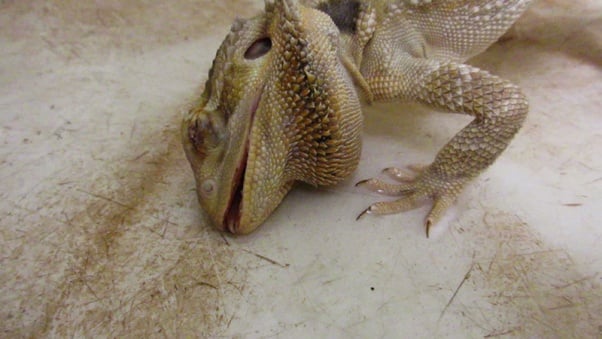
Did you also know that, like snakes, bearded dragons shed? Not providing them with adequate heat and light can be detrimental to their ability to shed their skin properly, as can failing to provide a naturalistic enough environment (with rocks, branches, etc.).
6 Other Bearded Dragon Facts
- Bearded dragons eat crickets. As the guardian of a bearded dragon, your life will include many trips to the pet store to buy these crickets, who will often escape into your home and chirp all night.
- It’s illegal to own a bearded dragon in Hawaii.
- Bearded dragons lay eggs—typically around 20 at a time.
- Many foods are toxic to bearded dragons. The oxalic acid in avocados, for instance, makes them potentially fatal to these reptiles.
- In nature, bearded dragons can be social, but in an unnatural setting like a human home, they shouldn’t be housed together.
- Do bearded dragons hibernate? They brumate, actually, which is similar—but brumation in captivity can be irregular and complex.
Bearded Dragon Lifespan
In nature, bearded dragons can live to be 8 years old, but in captivity, it’s estimated that up to 75% of “pet” reptiles die within the first year of life. Bearded dragons and other reptiles aren’t “starter pets” (imagine your son or daughter’s heartbreak when their new lizard friend dies within less than a year)—they’re sensitive animals who can experience anxiety, stress, distress, excitement, fear, frustration, pain, and suffering and who require specialized care.
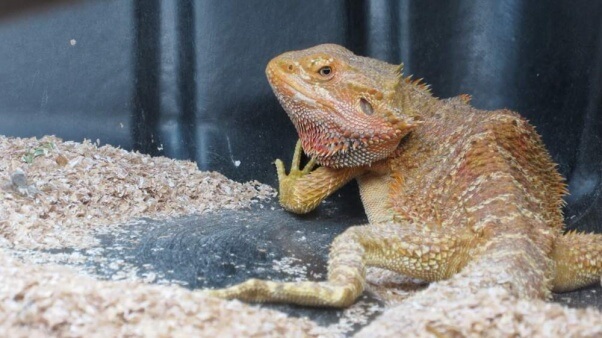
Those who buy bearded dragons often do so on impulse and have little to no knowledge of their special needs for space, heat, humidity, lighting, live prey, and so on.
Without proper care, bearded dragon “pets” who outlive the one-year curse often suffer from serious and painful health problems, including metabolic bone disease from calcium deficiency, mouth rot, respiratory disease, abscesses, and ulcers.

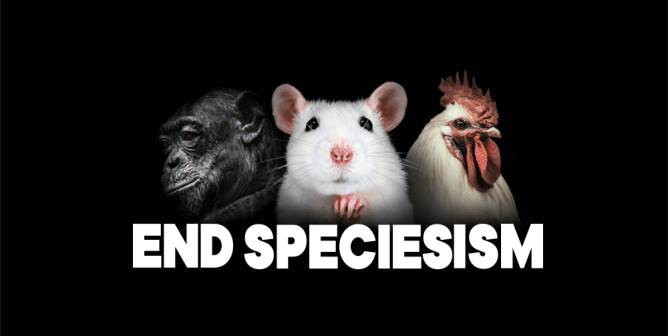
Bearded Dragons for Sale?
PETA undercover investigations have revealed rampant abuse and neglect in the businesses that transport and sell “pet” bearded dragons and other reptiles—including a 15-week PETA eyewitness investigation at Reptiles by Mack, a reptile mill in Xenia, Ohio, that bred and sold bearded dragons and other animals to pet stores across the country, including PetSmart.
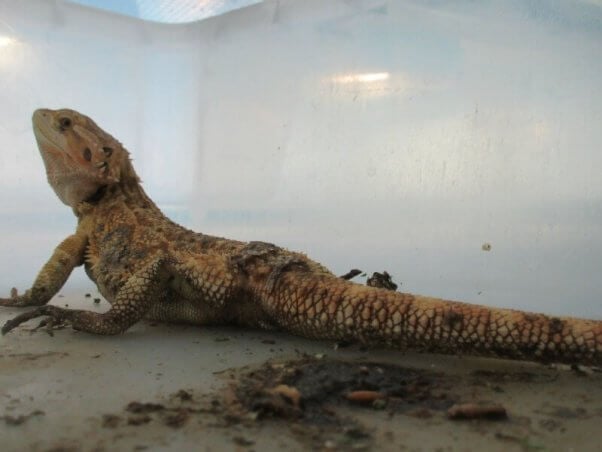
At Reptiles by Mack, some of the young female bearded dragons died after being put into tubs with large males (a practice that a supervisor described as “throwing little kids in there to get raped”).
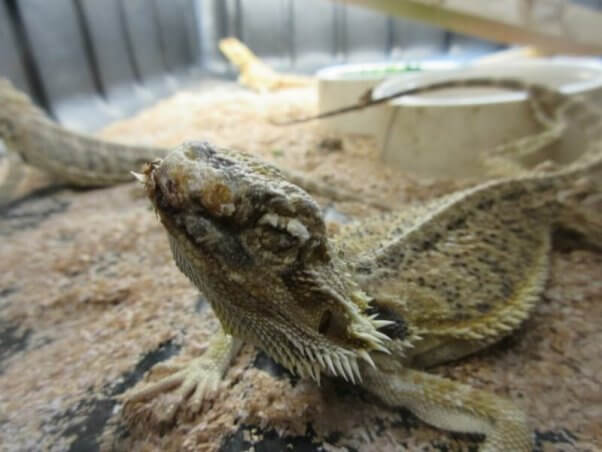
Many bearded dragons’ only source of “water” was shriveled leafy green vegetables. One PETA investigator documented how lethargic, dehydrated bearded dragons clamored for water and drank continuously—for up to four minutes—when he offered it to them.
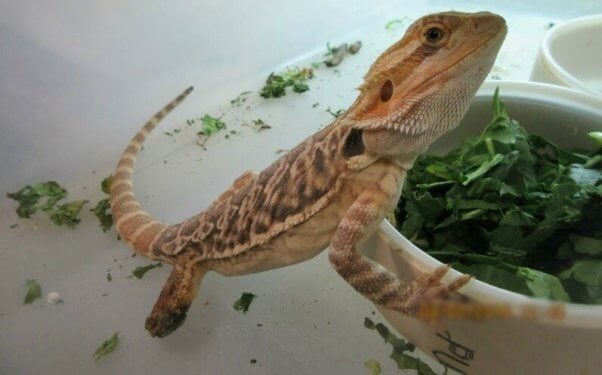
One worker said that he had cut off a bearded dragon’s leg with wire cutters and “snap[ped]” off their tails with his fingers.
These circumstances are not unusual—at the time, Reptiles by Mack was the sixth animal dealer with ties to large pet store chains that PETA exposed.
Do Bearded Dragons Like to Be Touched?
Ever wondered, “How do you play with a bearded dragon?” or “Can bearded dragons hurt you?” As the Centers for Disease Control and Prevention (CDC) and the U.S. Food and Drug Administration point out, because of the high risk of contracting potentially deadly salmonella, keeping “pet” reptiles is dangerous—both agencies warn against it. Bearded dragons and other reptiles can carry salmonella bacteria on their skin, and the bacteria can even be found in the animals’ enclosures—salmonella can be transmitted just from holding them, cleaning their enclosures in a sink, allowing them to walk around on floors or surfaces, or allowing children to touch them and then later touch their own mouths. In 2017, a newborn girl was hospitalized after being infected with salmonella via a “pet” bearded dragon—doctors reportedly told the baby’s mother that her daughter “could have passed away.” In 2020, the CDC reportedly found that 13 salmonella infections across eight states were potentially tied to handling “pet” hedgehogs and bearded dragons.
Gripping a bearded dragon of any size can cause them to struggle and thrash about in an attempt to escape, which causes them anxiety. If you live with other animal companions, such as a dog or cat, their presence can make a bearded dragon anxious, too—in nature, bearded dragons burrow underground to avoid predators, but in your home, they can’t escape the possibly frightening interest of other animals. And in January 2022, the CDC reported that “pet” bearded dragons have apparently been linked to a months-long, multistate salmonella outbreak, one that’s left at least 44 people ill and 15 hospitalized. The agency said that it believes the number of human cases to be much higher, as many who become ill never get tested and since “it usually takes two to four weeks to determine if a sick person is part of an outbreak.”
How Much Do Bearded Dragons Cost?
Ultimately, the cost of buying a bearded dragon is the reptile’s very life. If you feel prepared for the commitment, devotion, and patience necessary to become a companion animal’s guardian, please consider adopting a dog, cat, or rabbit who can thrive when properly cared for in a human home. Click below to learn what you should know before adopting a “pet”:
You can also speak up for bearded dragons and other animals who are suffering and dying in the pet trade—tell PetSmart officials that you plan to buy supplies from only businesses that don’t sell animals, such as Target, Walgreens, or online retailers:




